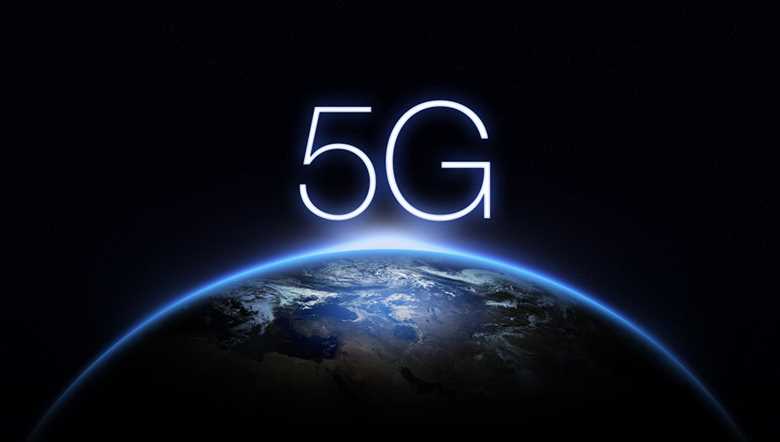A race between network operators has begun. Laurence Doe investigates the latest 5G partnership developments and how much hangs in the balance without a structured approach to spectrum allocation.
The starting gun has already fired for 5G. Most of its pioneers have already started or are planning their commercial launches for 2019, including operators on almost every continent.
According to forecasts by GSMA Intelligence, the research and data arm of the trade body representing the interests of mobile network operators worldwide, there will be 1.2 billion 5G connections by 2025. In the same year, 5G networks will cover 40% of the global population, which is about 2.7 billion people and 37% of the Asia-Pacific population.
The association has also found that the socio-economic impact of 5G will contribute $2.2 trillion over the next 15 years, with key sectors such as manufacturing, utilities and financial services benefiting the most from the new technology.
By 2025, 5G is also forecasted to account for around 30% of connections in markets such as China and Europe, and around half of the total in the US.
“5G is more than a new generation of technologies; it denotes a new era in which connectivity will become increasingly fluid and flexible,” explains GSMA’s technical director Michele Zarri, technical director at the GSMA.
“5G networks will adapt to applications and performance will be tailored precisely to the needs of the user. It will be a catalyst for innovation and enable richer, smarter and more convenient living and working. “5G is an opportunity for operators to go beyond connectivity and partner with other service providers across finance, transport, retail and healthcare to deliver rich new services. “It is also an opportunity for the entire mobile ecosystem to collaborate and trigger a wave of disruptive technology across devices, apps and services.”
New capabilities
To get a better understanding of 5G’s benefits, I began a discussion with EE, which became the UK’s first operator to launch 5G on 22 May this year.
Chris Sims, MD of enterprise strategy and marketing at BT, says that the operator is “really pleased” to be the first to win the UK’s race, but the group is “determined to stay ahead consistently”.
“We’re deploying 5G through 3.4GHz spectrum on our microsite network. It’s well-suited to that and we’re seeing really great results,” says Sims. “We are working with vendors and partners to make sure that we will continue to be first to evolve our network in line with standards. I think the key thing is that 5G is not a single point in time. 5G is defined by the 3GPP and we are launching 5G according to the standards as defined today.”
The 3GPP, which stands for ‘3rd Generation Partnership Project’, is a standards organisation which develops protocols for mobile telephony. Its work on ‘Release 15’, which is the first full set of 5G standards, has been completed.
The group’s focus is now shifting on to the first stage of Release 16, often referred to informally as ‘5G Phase 2’. So far, 83 studies relating to Release 16 and a further 13 relating to Release 17 have begun, covering topics such as vehicle-to-everything (V2X) application layers, 5G satellite access and wireless and wireline convergence for 5G.
Sims says that BT has been speaking to thousands of customers about what these capabilities will mean for their businesses, which has led to the group being “absolutely overwhelmed” with the level of innovation 5G is creating within its customer base.
“The use cases that have started to emerge include things like virtual reality and augmented reality for supporting lone workers, sales journeys and to support customer experience,” explains Sims, who sees a big opportunity to develop 5G in ‘Industry 4.0’ — a name given to the current trend of automation and data exchange in manufacturing technologies.
“The internet of things just gives organisations a much better ability than ever before to collect data about the way their assets and the way their people are operating,” continues Sims. “That’ll allow them to drive huge efficiencies in their business and really drive a much better customer service and resilience within their operations.”
But another revolution is happening in media and broadcasting, which is being made “much more straightforward”, according to Sims.
“This is a massive opportunity,” he adds. “If you go to any major event you see lots of outdoor broadcast trucks. With the ability of 5G, multiple cameras can be stored in a single location with a much lighter and affordable kit. This is a revolution in the outdoor broadcast market and from an enterprise point of view. For BT, it could really allow us to build on the media and broadcast services we provide today.”
This capability has already been embraced by French multinational telecommunications corporation Orange, which teamed up with the French Tennis Federation and France Télévisions to win the race to air the first live 8K TV images of the matches within the Roland-Garros stadium by using the operator’s 5G network.
During the 15-day competition, Orange displayed its sports coverage at the stadium in two specially-created showrooms. For the first time at the French Open, France Télévisions’ 8K cameras, located on the Philippe-Chatrier court with their real-time data processing platform, broadcasted live to Orange’s local 5G transmitters, which were deployed in partnership with Nokia for the event.
France Télévisions’ sports newsroom also tested, in real conditions, Orange’s new 5G broadcasting performance using mobile HD cameras. But what is the key to continuing the development of such networks? Arnaud Vamparys, senior VP of radio networks and 5G champion at Orange, tells me that fragmentation is something to avoid.
“Orange wants to help in the development of the ecosystem by sticking to one standard and avoid fragmentation by geography,” says Vamparys. “If you want to give sectors of the economy access to 5G, there has to be a dialogue between the operators and the sections of the economy so that any problems can be addressed.
“We are committed to giving 5G access to everyone, to really help the ecosystem on this learning curve. 5G is a technological leap and will be significant for many companies and many sectors of activity.
“We want to write the story of 5G together. by uniting and consolidating our resources in the development of different countries. You can’t differentiate 4G from 5G without the correct development taking place. It will be defective, impacting the standard that is being developed as of this moment.”
Banding together for the best
If the new capabilities of 5G are to be explored by operators such as Orange and BT without hindrance, then 5G spectrum auctions across the world need to be held and executed correctly.
The successful rollout of ultra-fast 5G services also relies on timely access to the right amount and type of spectrum. Variations in how much spectrum has been assigned, the onerous conditions imposed – and the cost of access to that spectrum – means the speed, reach and quality of 5G services could vary dramatically between countries.
The GSMA has already raised concerns (scroll to the end of this feature for the GSMA’s ‘Auction Best Practice’ paper highlights) into some auctions’ designs artificially inflating prices or inefficiently distributing already scarce spectrum resources, which risks harming consumers. It has also outlined several key considerations for governments and regulators.
“Governments need to come together to make spectrum decisions that will have an impact on mobile broadband growth,” Zarri says, “specifically, radio frequencies for high-capacity 5G are at stake, frequencies which operators require to offer world-leading 5G communications services.
“5G networks can use this radio spectrum to offer performance levels that until now have not been attainable. Areas such as high-capacity broadband, industrial automation and intelligent transport systems can all break new ground with innovative services using mmWave spectrum.”
Having enough harmonised 5G spectrum in these bands is critical to enabling the fastest 5G speeds, low-cost devices and international roaming and to minimising cross-border interference. Global harmonisation of these bands will create the greatest economies of scale and make 5G more affordable across the world.
Unlocking spectrum for the mobile industry to deliver innovative 5G services across different industry sectors could add $565 billion to global GDP and $152 billion in tax revenue from 2020 to 2034, according to a report by the GSMA entitled: ‘Socio-Economic Benefits of 5G Services Provided in mmWave Bands’.
mmWave 5G will not only provide consumers with ultra-fast mobile broadband services but will stimulate a host of applications, including enhanced remote healthcare and education, industrial automation, virtual and augmented reality, and many others.
One such example can be found in the Port of Hamburg, Germany’s largest port. The Hamburg Port Authority, German telco Deutsche Telekom and Finland’s Nokia commissioned an 8,000-hectare area with which to carry out key tests of various aspects of 5G functionality, including network slicing, in February 2018. The trial in Hamburg tested several network slices under ‘live’ conditions in an industrial setting, a first in Germany.
Traffic light management, data processing from mobile sensors and virtual reality were all provided connectivity by an antenna, which was installed at the top of the 150-metre-tall Hamburg television tower.
In addition to an already impressive list of applications, Phil Twist, vice president of marketing and comms, networks at Nokia, tells me that 5G was also used by the port to monitor the temperature and location of the shipping containers, “combining various different use cases for 5G in one location and replacing what would have to be either no service or fixed service”.
This was only possible because of dedicated virtual networks, known as ‘network slices’, in the 5G testbed, a key architectural feature of 5G that enables networks to dynamically and flexibly adapt to the requirements of many different applications.
“If you imagine a harsh factory environment, the equipment must be cabled up, which means you have to turn the factory off, clean it up and run the cables, leading to no flexibility on where the equipment goes,” explains Twist. “If you have a modern, flexible production environment with robots that are connected to 5G, they can move.
“If you have a second overlay using a network slice, which is very low latency and a security blanket, it means that robots can run alongside people on the floor and be able to react fast enough so that people can’t get hit by the robots because the response time is fast enough.”
Although Twists’ statement around robotic safety is one many would like to question rather than trust, Nokia and Bosch Connected Devices and Solutions GmbH Combination have already put the smart sensor technology to the test.
“The studies we’ve done shows that you need a latency of two milliseconds or less for this security slice, which is able to switch the robots off and stop them moving fast enough to have any chance of them hitting the person working,” continues Twist. “What that means is you can have flexible production with people working alongside robots, or you could end up with a ‘dark factory’, which can have the lights off due to robots being able to talk to one another through a centralised control.”
According to the GSMA, 5G applications such as this are helping to fuel the early lead being established in the Asia-Pacific and Americas regions. They are expected to generate the greatest share of GDP attributed to mmWave 5G, at $212 billion and $190 billion respectively. Europe is forecasted to have the highest percentage of GDP growth attributable to mmWave of any region, with 2.9%. However, the advantages are not restricted to early-adopting mobile markets and, as the rest of the world deploys 5G in subsequent years, economies of scale derived from spectrum harmonisation will stimulate even faster growth.
Regions such as Sub-Saharan Africa, Central Asia, Latin America and the Caribbean could see growth in GDP contribution from mmWave 5G applications of over 65% per year from 2026 until 2034.
The finishing line
Over the course of writing this article, I have come to understand that my perception of 5G as a race between the ‘competitors’ — countries and companies — is completely wrong. The closest it could be likened to is the sprint hurdles at the Olympics with a relay race twist.
It will take important industry discussions to ensure countries can leap over the obstacles presented by spectrum allocation and limitations. While this takes place, companies will need to continue working together with organisations such as the 3GPP to learn how they can push the limits of what they can achieve by following the standards that will ultimately dictate how fast they can run.
GSMA’s ‘Auction Best Practice’ paper highlights: • The top priority for spectrum auctions should be to support affordable, high quality mobile services – not to maximise revenues; • Auctions should not be the only awards process considered, as they are not always suitable; • Assign a sufficiently large amount of spectrum and publish roadmaps to support high quality mobile services; Set asides for vertical sectors or new entrants may threaten how much operators can access and also risk inflating spectrum prices; • The auction design should not create unnecessary risk and uncertainty for bidders; and • Poorly chosen lot sizes or inflexible packages of spectrum lots risk inefficient outcomes.







